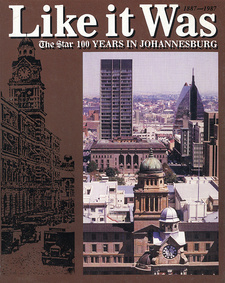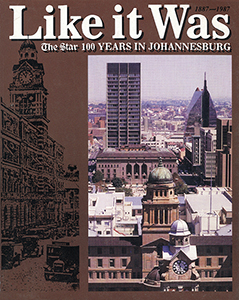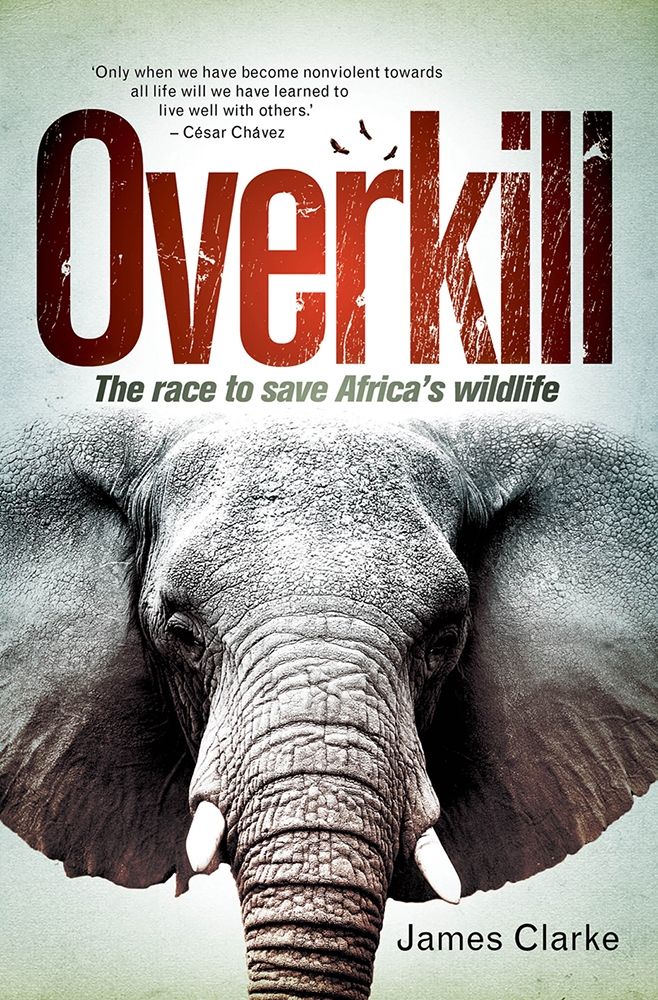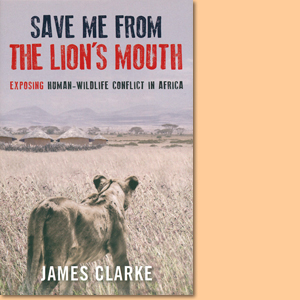Like it was. The Star 100 Years in Johannesburg 1887-1987, by James Clarke

Like it was: The Star 100 Years in Johannesburg 1887-1987, by James Clarke. Argus Printing & Publishing Company. Johannesburg, South Africa 1987. ISBN 0620093897 / ISBN 0620 09389 7
The foreword to the James Clarke's chronicle 'Like it was: The Star 100 Years in Johannesburg 1887-1987' was written by the Star's editor, Harvey Tyson.
What is history? How can a newspaper pretend to write it? There is one answer to both questions, and it comes from several great historians. "History," said Edward Gibbon, author of the Decline and Fall of the Roman Empire, "is little more than the register of the crimes, follies and misfortunes of mankind." "History," said Hendrik van Loon, "is the record of a man in quest of his daily bread and butter." "History," said Thomas Carlyle, "is a distillation of Rumour." "History," said Frederic Maitland, "is not what happened but what people thought or said about it." And each of those views describes a part of the content of a newspaper. The fact that newspapers are not (or ought not to be) boring and pompous does not detract from their value as records of history. "In analysing history," Ralph Waldo Emerson advised, "do not be too profound, for often the causes are quite superficial." Too often historians ignore contemporary public opinion, community attitudes and the social pressures of the times. Too often academics use hindsight to rearrange history. Too often modern prejudices distort judgments on the past. In compiling this history of Johannesburg from the files of The Star we rediscovered an old, yet exciting truth: contemporary influences, prejudices and the spontaneity of events must be properly appreciated before historical events can be accurately assessed, and these are laid bare daily in pages of newspapers. We were fortunate in having the opportunity to combine both hindsight and spontaneity in this volume. We have assembled the undiluted contemporary judgments of the community about the events of their era, and have tried to use hindsight only to make value judgments on what is significant and what is not. Deciding which events to highlight and which to leave out is, fortunately, the daily task of editors; fortunate because in this case it is a particularly onerous task and requires skills which are gained mainly through constant professional practice. But what about the accuracy of the contemporary record? If it is flawed, everything is false. We believe that on this cardinal issue we have again been extremely fortunate. It is not for me, as the 19th editor of The Star in 100 years, to say whether this newspaper has accurately reflected its community throughout that time. I know we have sometimes erred. The newspaper has often made factual errors, which fortunately correct themselves as events unfold. Sometimes editors have made subjective misjudgments. But The Star has several constant elements which quickly bring it back into line when it strays off course. Indeed, in assisting James Clarke in a task much greater than any of us anticipated, I learned with surprise that the principles which The Star follows today were enunciated in almost the same words a century ago. This newspaper would not propagate any sectional interest, averred its editors, but would try to represent the interests of its entire community. The community itself has changed, and the principles so proudly enunciated have not always been maintained, but the compass remained sure. Let a disinterested historian assess the value of The Star's contemporary record. Dr A A Mawby, in a thesis on The Political Behaviour of the British Population of the Transvaal 1902-1907", stated: "It becomes important to establish the nature of the relationship between the (news)papers and the mining men with interests in them, and to consider whether these papers were mere organs of the mining houses. This importance stems both from the press's contemporary influence of public opinion and from its potential value as historical evidence ..." [...]
This is an excerpt from the book Like it was: The Star 100 Years in Johannesburg 1887-1987, by James Clarke.
Title: Like it was
Subtitle: The Star 100 Years in Johannesburg 1887-1987
Editor: James Clarke
Publisher: Argus Printing & Publishing Company
Johannesburg, South Africa 1987
ISBN 0620093897 / ISBN 0620 09389 7
Original softcover, 23 x 29 cm, 244 pages, throughout b/w photos and illustrations
Clarke, James im Namibiana-Buchangebot
Like it was. The Star 100 Years in Johannesburg 1887-1987
Like it was is a tremendous, most interesting collection of representable newspaper publication of the South Africa newspaper 'THE STAR' through 100 years from 1887 to 1987.
Overkill: The Race To Save Africa's Wildlife
Overkill: The Race To Save Africa's Wildlife describes the history and extent of human impact on the worlds wildlife.
Save me from the Lion's Mouth: Exposing Human-Wildlife Conflict in Africa
Save Me From the Lion's Mouth investigates the increasing conflict between people and wildlife in Africa.



